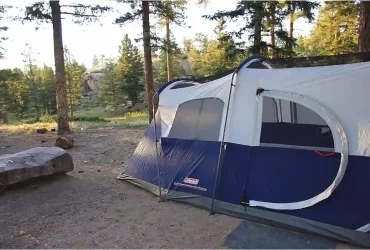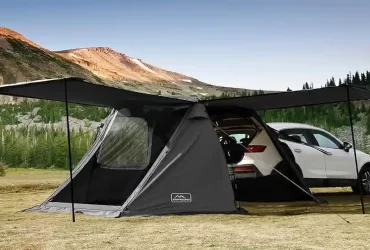Arrangement of wood in a fire pit can be done in a variety of ways. You can learn from YouTube or your grandpa how to stack wood carefully to keep your fire roaring and master the art of wood and flame. There is a difference between each model of the fire pit. To achieve the sought-after secondary burn, you should get creative with the way you stack the wood inside your fire pit. Here are some firewood stacking techniques passed on by a wise and mysterious spark sage in the spirit of creativity.
In order to keep your fire pit clean, Joseph recommends not stacking your firewood higher than the top vents. The vents must be clear in order for the flame to burn smokelessly. My fires have been built in all of them so many times. The backyard of my house. During a campsite trip. It doesn’t matter where you burn that secondary burn, this method works every time.
Using Charcoal and Paper
Dry and fuss-free materials such as charcoal and paper don’t produce smoke. Adding charcoal/coal to a fire is easy, and paper easily ignites. Additionally, coal is fantastic for cooking over a fire since it produces a lot of heat, which is excellent for keeping warm on particularly chilly nights.
You will want to lay down some paper after creating or using a firepit on your campsite. An old newspaper works well. This should be topped with a layer of dry, brittle kindling. When it’s brittle, it will certainly be dry. By combining this tinder with another triangle, create an upside-down triangle.
Light a few pieces of paper to serve as kindling in the hole of this star shape. You can then use coal to fuel the fire. Burn any dried brittle wood you have if you want, as long as it’s brittle.
Twigs Make a Great Fire
You can make a fire with twigs if you want to be stealthy, and backpackers in particular will benefit from this method if they need some warmth during the evening. Get as many twigs as you can that are dry and pencil-sized. This should be sourced from the ground as much as possible.
The twigs can be placed on dried grass and leaves, or even on paper if you have some. To burn the twigs, light the paper and kindling, and then light the kindling. When you first light the fire, it will smoke, but that will dissipate after a few minutes. These tiny twigs can be used to feed your fire, one or two at a time, so it will remain smokeless.
Flip Your Fire Over
Creating your campfire upside down reduces smoke since the gases that cause smoke are created at the bottom of the fire. As these gases are burned up in the flames, there is no smoke to release into the atmosphere as a result. A base of logs should be created, and smaller logs should be added on top. All that should be placed on top of your kindling.
Then you can scrunch a piece of paper into a ball and add that on top. You will have a firefighter like this. In the end, the paper will ignite, which will spread to the logs and kindling. The smoke from your fire will disappear after it has fully developed, but it will continue to grow for a few minutes.
Create A Dakota Firepit
Dakota firepits make great projects for campfire builders who want to get creative. A hole about a foot deep and 6–12 inches wide should be dug. Make it wider as you go. You should then move 10 inches away from the original hole once you return to the surface.
Using a shovel, dig a second hole 8 inches wide until the bottom of the first hole meets the bottom of the second hole. Make sure this second hole is located on the side of the fire hole where the wind is blowing. The fire should be built in the larger hole using a tinder made from very dry wood. Cooking over this campfire is more fun than heating over it. Your cookware can be placed atop the fire hole. Moreover, it makes a great stealth fire that won’t disturb the neighbors.
Pre-existing Firepits
At times, you’ll discover you didn’t bring the equipment you needed to create a smokeless fire when you get to your campsite. On the site, you already have a pre-existing firepit and some wood logs. That’s fine with me. When there is still smoke from a campfire, there are ways to reduce it and prevent it from following you. I’ll discuss why campfire smoke follows you in my article, and give you tips on how to minimize campfire smoke.
Alternatives To Campfires
To conclude, preventing campfires from being used altogether is the best way to ensure a smokeless fire. The resources to go smokeless might not always be available, or perhaps your campsite won’t allow fires. Campfires can be replaced with several great alternatives. In addition to many ways to heat your tent, you can try many different ways to light your campsite and tent. There is no need to fire up a campfire!




Leave a Reply
View Comments